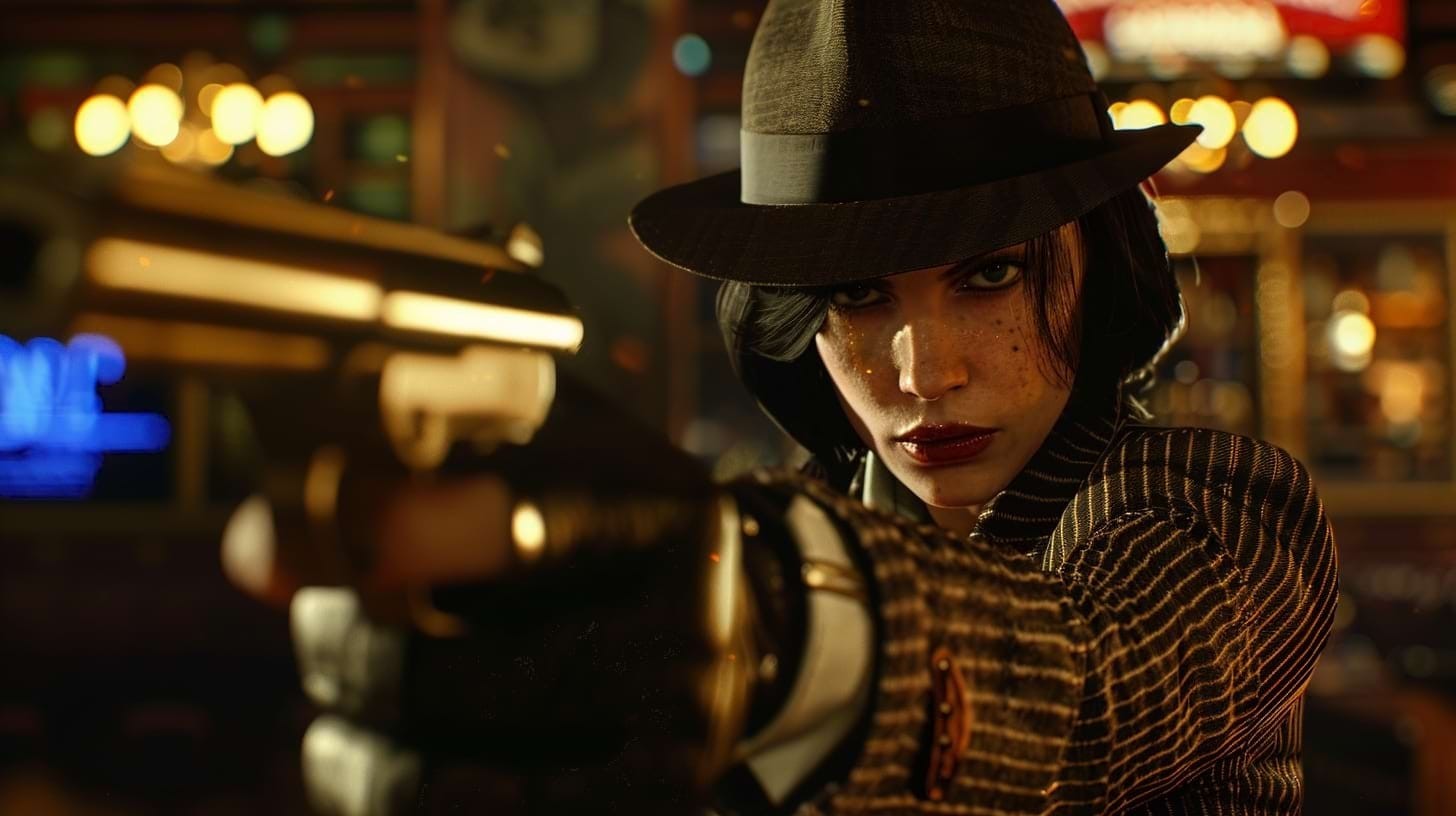The Psychology of Captivation: Building Characters that Resonate
Characters are the emotional anchors of the story through which we discover the film's world. Investing efforts into character development is forging a deeper connection with the audience. This investment transforms a film from entertainment into a truly unforgettable experience.


Film characters are our emotional entry points into the story. Through their struggles and triumphs, we travel into the movie.
Character development is crafting individuals with depth, complexity, and flaws that mirror the human condition. This allows audiences to connect with personages deeper, fostering empathy, understanding, and a sense of shared humanity, even when the characters are far removed from our realities.
Bring Your Characters to Life with Filmustage!
Instantly analyze and break down your script, setting the stage for deeper character development.
Techniques for Crafting Memorable Characters
Memorable characters are the ones who stay with you long after the credits roll.
So, how does a script full of names transform into a cast of characters that captivates audiences? Forget cookie-cutter heroes and predictable villains. It's all about adding dimension and depth.
Here's the secret sauce🥣:
🎥 Character Arcs
It's the emotional and psychological metamorphosis a character undergoes throughout the film. This transformation, whether a descent into darkness or a triumphant rise from adversity, is central to character development and audience engagement. For instance, consider the unforgettable Andy Dufresne (Tim Robbins) in "The Shawshank Redemption" (1994). Witnessing his unwavering resilience and audacious escape plan over two decades is a testament to a meticulously crafted character arc.
🎭 Psychological Depth
Truly memorable characters are those who feel like living, breathing individuals with complex psyches. This depth is achieved through attention to backstory, motivation, and emotional vulnerability. A deep-seated need for validation might drive a seemingly heroic character, while a villain's cruelty could stem from a childhood of abuse. By exploring these psychological complexities, filmmakers create characters who feel nuanced and human, even when their actions are morally ambiguous.
💔 Character Flaws and Contradictions
The most compelling characters are rarely one-dimensional. Imbuing them with flaws, contradictions, and internal conflicts adds layers of complexity that make them feel more human. Give your protagonist a relatable struggle, a past mistake, or a quirky personality trait.
🎯 Motivational Mayhem
What drives your characters? Unfulfilled dreams, a thirst for revenge, or simply a desire for a decent cup of coffee? Untangle their motivations to create a sense of purpose and fuel their actions.
👥 Dynamic Duos (and Trios)
Relationships are the heart of any story. Explore the complexities of friendships, rivalries, and romances. Think of the hilarious banter between Nick and Jules in "Pulp Fiction" (1994) or the loyalty between Frodo and Sam in "The Lord of the Rings" film trilogy (2001-2003).
By weaving these elements into your characters, you create individuals with whom audiences can connect. They become invested in the character's journey, rooting for their triumphs and feeling their losses. That's the power of character development – it elevates your film from forgettable to phenomenal.
Delving into the Psyche: Unveiling the Inner World
Understanding human psychology is a potent tool in a filmmaker's arsenal. By delving into a character's psyche, you imbue them with realism and emotional depth.
For instance, the psychological thriller "Silence of the Lambs" (1991) benefited greatly from the collaboration between screenwriter, actors, and FBI profiler John Douglas. Douglas' expertise on criminal behavior informed the character of Hannibal Lecter, leading to a chilling portrayal of a psychopath that transcended the screen.
Shaping the Present Through the Past: The Power of Backstory ⏳
A character's backstory is the unseen foundation upon which their present actions and behaviors are built. While not always explicitly shown in the film, a well-developed backstory informs a character's motivations and adds layers of complexity. Consider the enigmatic Max Rockatansky (Tom Hardy, "Mad Max: Fury Road," 2015). However, details of his background story are fragmented, glimpses into his haunted past fuel his stoic demeanor and relentless pursuit of redemption.
Similarly, effective movie budgeting is crucial in bringing such complex characters to life. It ensures that every character development element is meticulously planned and executed, from casting to the final edit.
Vulnerability Creates Strength: The Allure of Imperfection
Flawless characters are a recipe for forgetfulness. Instead, the power of imperfection has to be embraced. By giving characters flaws and vulnerabilities, it's possible to make them relatable and human. Even the most heroic figures possess flaws, as seen with John McClane (Bruce Willis, "Die Hard," 1988). Despite his courage and resourcefulness, his wisecracking persona and everyman vulnerabilities endear him to audiences.
Iconic Film Characters and Their Impact
Throughout cinematic history, there have been countless examples of characters whose impact has transcended the screens. Let's examine a few iconic examples:
🤡 The Joker
Heath Ledger's Joker in "The Dark Knight" (2008) wasn't your average villain. No grand plan for world domination, just pure, terrifying chaos. His unpredictable nature and chilling performance redefined what a villain could be, leaving audiences both terrified and strangely captivated.
This is the power of defying expectations. We're bombarded with formulaic villains – the power-hungry megalomaniacs, the vengeful ex-lovers. But by stepping outside the box, you can create a villain that truly resonates.
🏃♂️ Forrest Gump
Tom Hanks' portrayal of the simple yet profound Forrest Gump showcased the power of emotional depth in character creation. Gump's innocence, loyalty, and unwavering spirit made him an endearing protagonist whose journey touched the hearts of millions.
🧪 Walter White
The mild-mannered chemistry teacher turned ruthless drug kingpin. His descent from a meek educator to a morally bankrupt criminal is a masterclass in character transformation. This kind of dramatic arc is what keeps audiences glued to their seats, questioning who to root for and what it truly means to be "good" or "bad."
👩🚀 Ellen Ripley
Sigourney Weaver's portrayal of Ellen Ripley is a testament to the power of character development. Her evolution from a warrant officer to a hardened survivor battling for her life is a masterclass in portraying a character's resilience in the face of unimaginable horror. These are just a few examples of how filmmakers have utilized these techniques to create iconic characters.
How Filmustage Can Help You Craft Unforgettable Characters
A mind-blowing plot twist can leave you gasping, but it's the characters who stay with you long after the credits roll. They're the emotional anchors of your film, the ones who make you laugh or cry.
✨ Filmustage, an AI platform streamlines pre-production, freeing you to focus on crafting compelling characters. For example, Filmustage analyzes and breaks down the script, identifying each personage. This initial step lays the groundwork for further exploration, allowing filmmakers to delve deeper into character development at a later stage.
From Breakdown to Budget in Clicks
Save time, cut costs, and let Filmustage’s AI handle the heavy lifting — all in a single day.